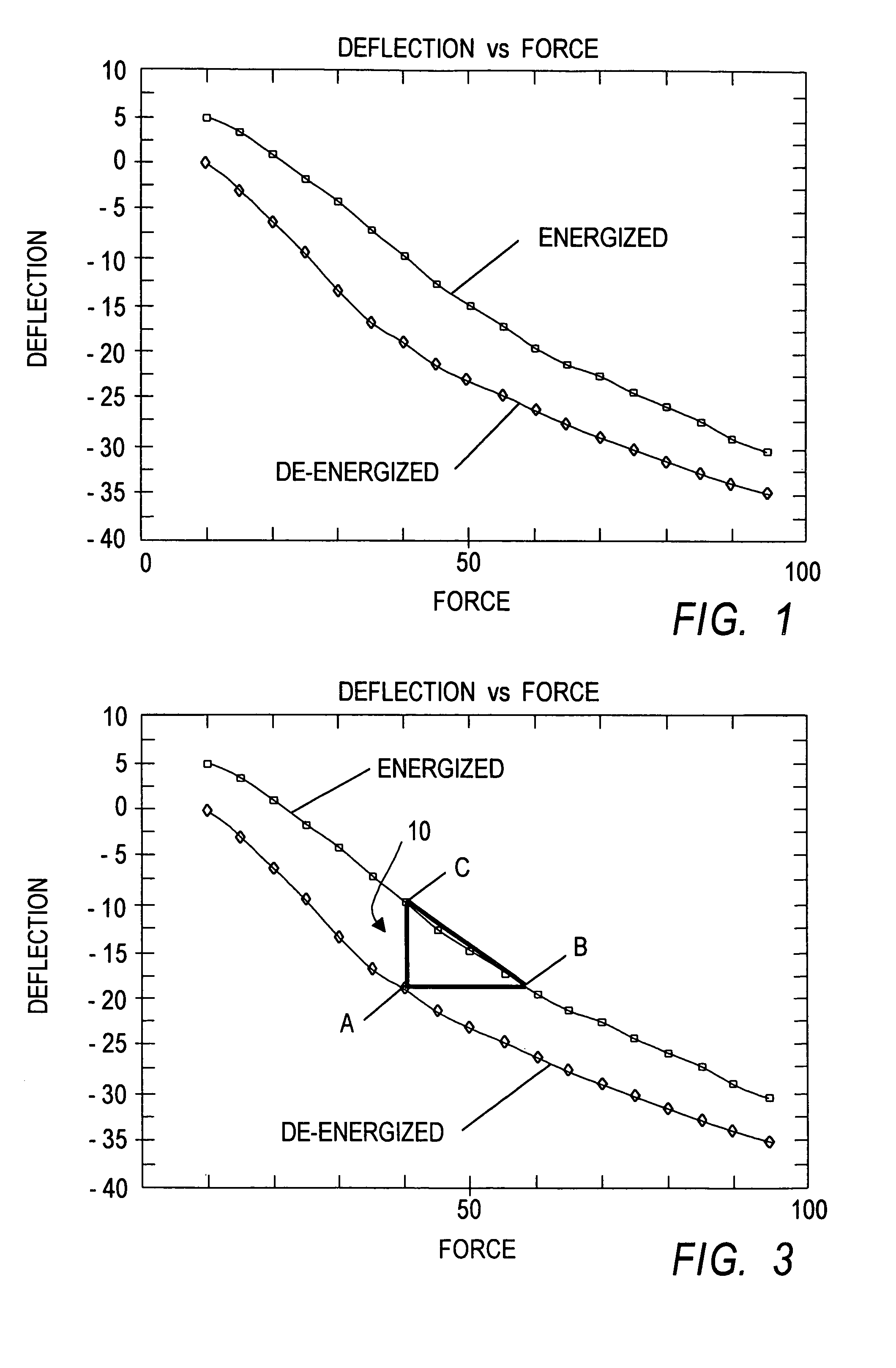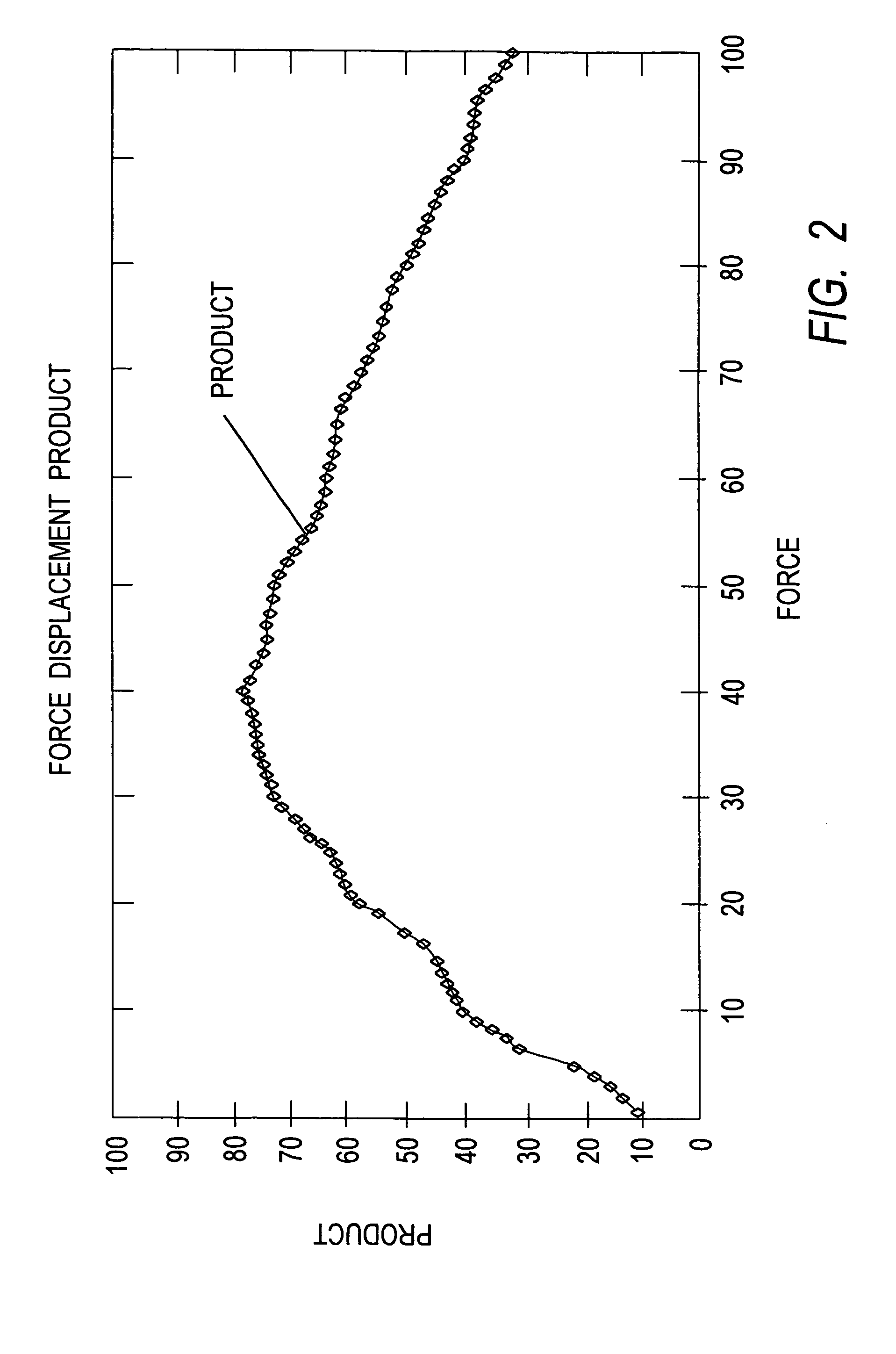Apparatus and process for optimizing work from a smart material actuator product
a technology of smart material actuators and actuators, applied in the direction of device details, device material selection, piezoelectric/electrostrictive device details, etc., can solve the problems of reducing difficult to achieve objectives, etc., to reduce the effective life of the mechanism, optimize the performance of the smart material actuator, performance and flexibility
- Summary
- Abstract
- Description
- Claims
- Application Information
AI Technical Summary
Benefits of technology
Problems solved by technology
Method used
Image
Examples
second embodiment
[0029]Now referring to FIG. 5a, the present invention is depicted. Actuator assembly 10 includes a smart material actuator 20, force transfer member 30, floating plate 100, back holding plate 110, and fastener means 110. In this embodiment, the compliant mechanism of the actuator assembly 10 is held together by the back holding plate 120 with two fasteners 110 trapping the smart material actuator 20 between the force transfer member 30 and floating plate 100 causing the smart material actuator 20 to be pre-loaded by the relationship of the back holding plate 120 to the force transfer member 30 and its compliant structure.
[0030]Now referring to FIG. 5b, a close-up view of the floating plate 100 is depicted. As the two fasteners 110 are engaged, back plate 110 will not move in a parallel fashion to the force transfer member 30. The smart material actuator 20 does not tolerate misalignment well. Misalignment can cause a failure of the smart material actuator 20 during assembly. Floatin...
third embodiment
[0031]Now referring to FIG. 6a, the present invention is depicted. Actuator assembly 10 includes a smart material actuator 20, force transfer member 30, rigid back plate 40, lower cam block 210, upper cam block 220, and adjustable cam 210. In this embodiment, the compliant mechanism of the actuator assembly 10 is of a single one-piece design, with two main features including the rigid rear support 40 and force transfer member 30. A second subassembly including the cam block assembly 200, 210, 220 is designed as an adjustable spacer. The smart material actuator 20 is captured between the cam block assembly 200, 210, 220 and force transfer member 30. The cam block assembly 200, 210, 220 is supported by the rigid rear support 40. As the adjustment cam 210 is moved the dimensions of the adjustable spacer change, creating greater or less pre-load.
[0032]Now referring to FIG. 6b, an exploded view of the cam block assembly of FIG. 6a of the present invention is depicted. The lower cam block...
fourth embodiment
[0033]Now referring to FIG. 7a, a cutaway view of the present invention is depicted. The actuator assembly 10 is shown cut at about the midpoint, such that the internal features are visible. Actuator assembly 10 includes a smart material actuator 20, force transfer member 30, rigid back support 40, lower wedge 300, upper wedge 310, and floating plate 100. In this embodiment, the compliant mechanism of the actuator assembly 10 is of a single one-piece design, with two main features including the rigid rear support 40 and force transfer member 30. A second subassembly including the wedge block assembly 300, 310 is designed as an adjustable spacer. The smart material actuator 20 is captured between the wedge block assembly 300, 310 and floating plate 100. The wedge block assembly 300, 310 is supported by the rigid rear support 40. As the wedge assembly 300, 310 is moved with respect to one another the dimensions of the adjustable spacer change, creating greater or less pre-load. The sm...
PUM
 Login to View More
Login to View More Abstract
Description
Claims
Application Information
 Login to View More
Login to View More - R&D
- Intellectual Property
- Life Sciences
- Materials
- Tech Scout
- Unparalleled Data Quality
- Higher Quality Content
- 60% Fewer Hallucinations
Browse by: Latest US Patents, China's latest patents, Technical Efficacy Thesaurus, Application Domain, Technology Topic, Popular Technical Reports.
© 2025 PatSnap. All rights reserved.Legal|Privacy policy|Modern Slavery Act Transparency Statement|Sitemap|About US| Contact US: help@patsnap.com



